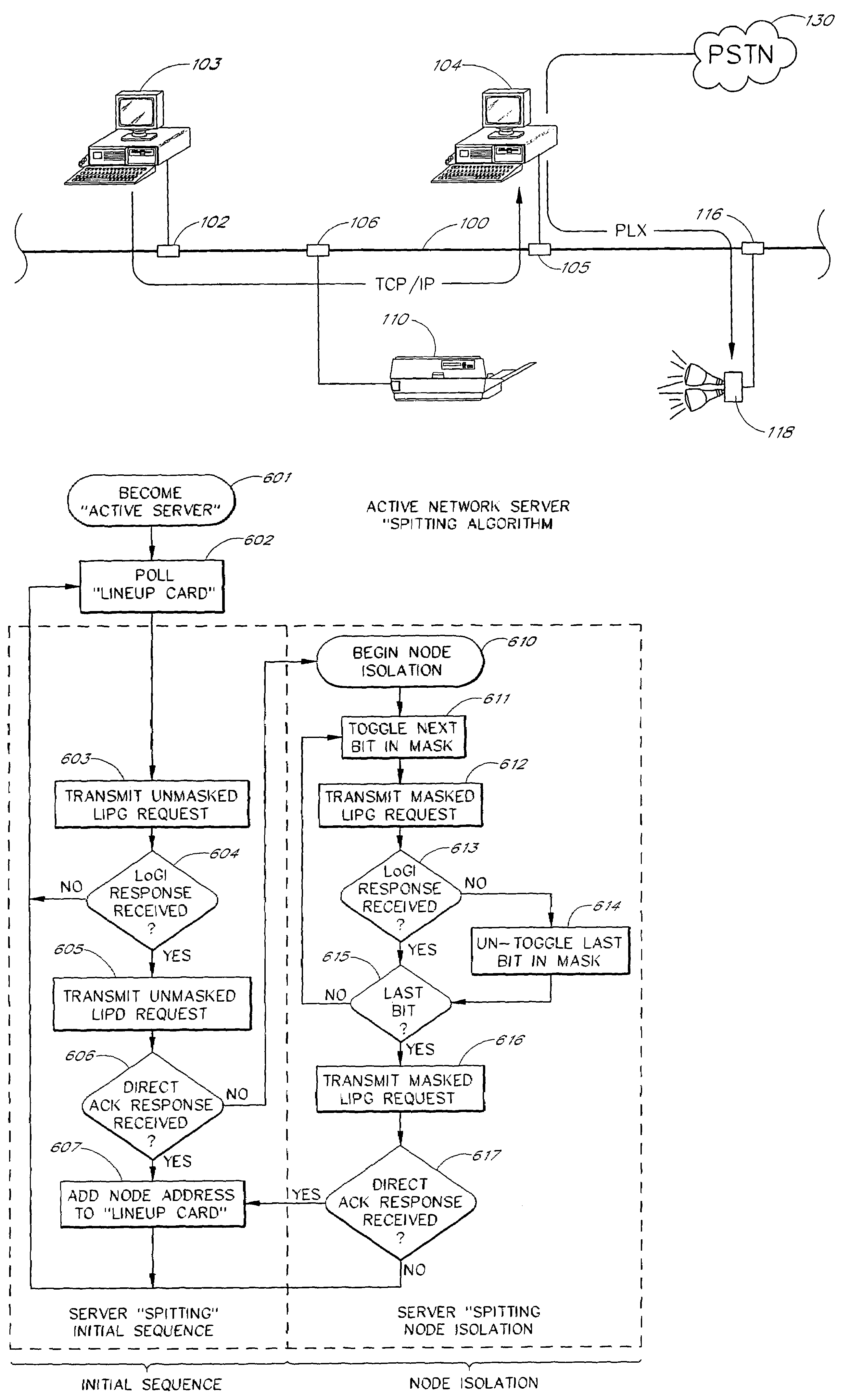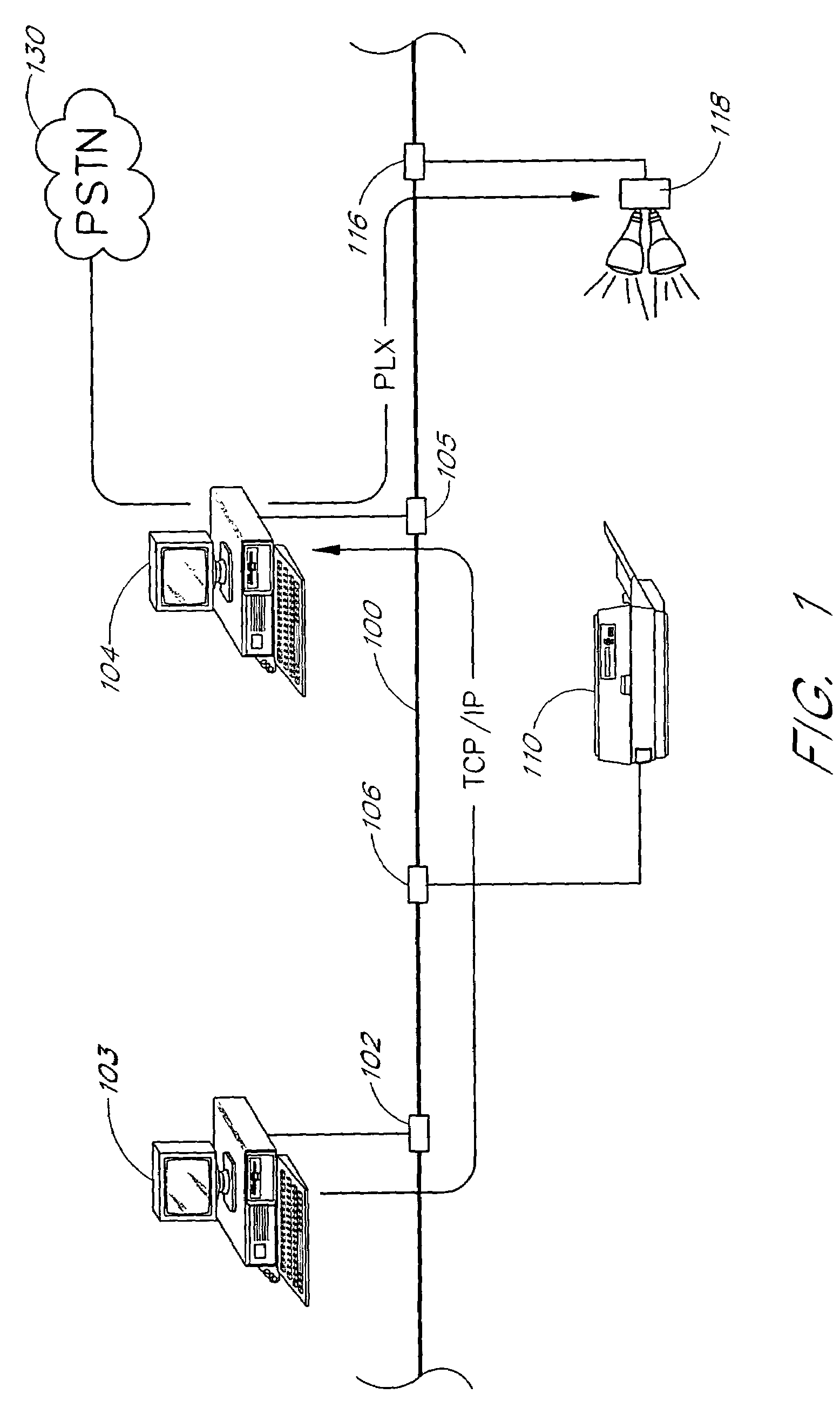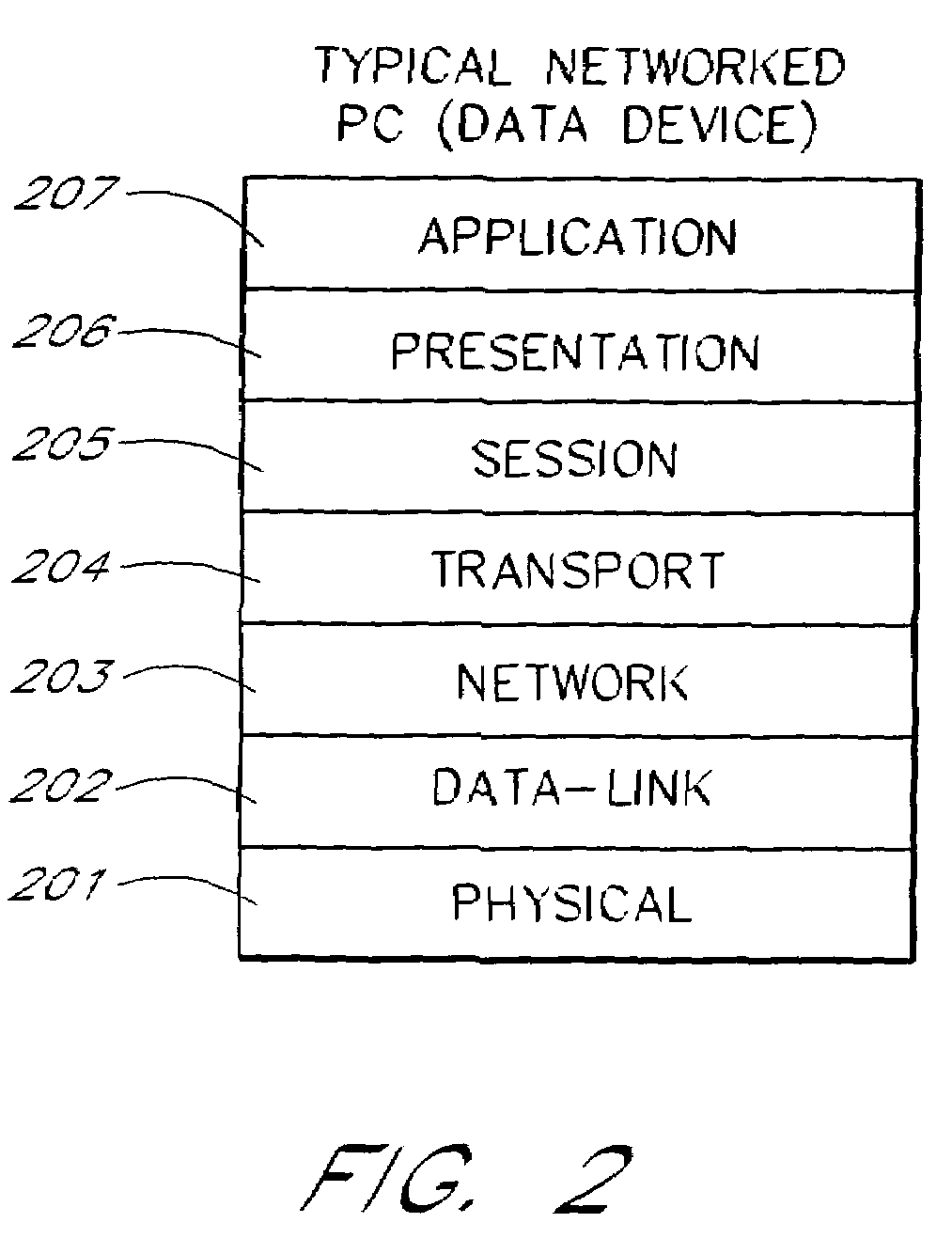Multi-channel power line exchange protocol
a power line exchange and multi-channel technology, applied in the field of data network protocols, can solve the problems of not having the necessary processing and storage capabilities, the typical printer is a “dumb device” device, and the creation of a computer network is often not quite as simple as it sounds, etc., to achieve flexible, reliable, and scalable effects
- Summary
- Abstract
- Description
- Claims
- Application Information
AI Technical Summary
Benefits of technology
Problems solved by technology
Method used
Image
Examples
Embodiment Construction
[0077]FIG. 1 shows a typical computer network having a network medium 100 (shown as a cable). A smart node (shown as a personal computer 103) is connected to the network medium 100 by a connector 102. A printer 110, a computer 104 and a security lighting system 118 are also connected to the network medium 100. The lighting system 118 is an example of a “dumb” node that has relatively little computing power or storage.
[0078]Most networks configured for smart nodes (such as the computers 103 and 104) are based on a network architecture model developed by the Open System Interface (OSI) committee. The OSI architecture defines a network model that outlines each individual hardware and software layer within a communication system, the inter-dependencies between layers, and the unique function each layer performs.
[0079]FIG. 2 shows the OSI architecture is split between seven layers, from lowest to highest: a physical layer 201; a data link layer 202; a network layer 203; a transport layer...
PUM
 Login to View More
Login to View More Abstract
Description
Claims
Application Information
 Login to View More
Login to View More - R&D
- Intellectual Property
- Life Sciences
- Materials
- Tech Scout
- Unparalleled Data Quality
- Higher Quality Content
- 60% Fewer Hallucinations
Browse by: Latest US Patents, China's latest patents, Technical Efficacy Thesaurus, Application Domain, Technology Topic, Popular Technical Reports.
© 2025 PatSnap. All rights reserved.Legal|Privacy policy|Modern Slavery Act Transparency Statement|Sitemap|About US| Contact US: help@patsnap.com



